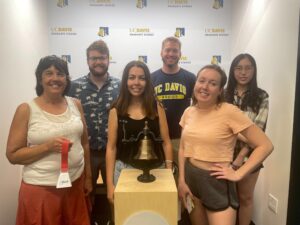A big belated congratulations to Dr. Merve Demir on filing her dissertation! Her research has helped further our understanding of the mechanisms and structures involved in MutY’s identification of the OG lesion and the excision of the misincorporated adenine. We wish her the best of luck as she continues her research adventures as a Postdoctoral Associate at the Conrad Prebys Center at SBP!


